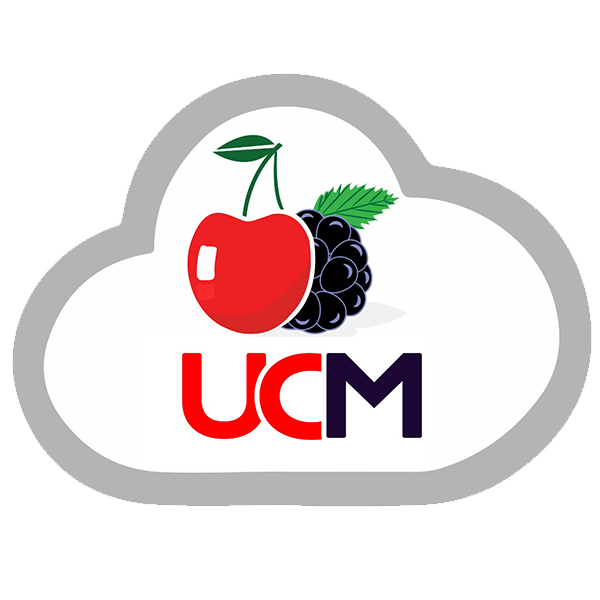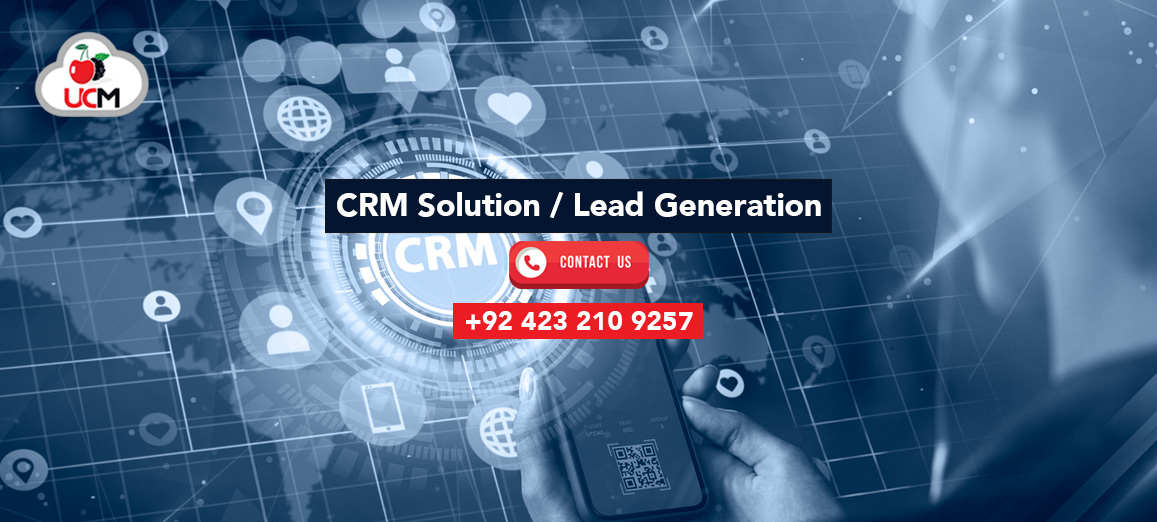Top Features & Benefits of Cloud-Based Call Center
On-Premise vs. Cloud-Based Call Center: What’s the Difference
A Cloud-Based Call Center primarily works like a traditional call center e.g. handling incoming and outgoing communication with customers. An on-site call center means that you should have all important physical hardware housed in your company. Moreover, installation and maintenance is your responsibility with phones and computers that are hardwired with a centralized system, generally a Private Branch Exchange (PBX) system. In on-premises call centers, companies can only benefit from basic telephony features. Conversely, a cloud-based technology does not need telecom equipment or in-house storage. You can collaborate with a service provider to get the cloud facility while your sales team can access the system from anywhere through the internet connection. This facility allows you to add new users easily without any physical installation. Briefly, cloud contact centers operate over the internet more than physical servers and phone lines.
Top Features of Cloud Contact Center
1. Virtual Assistant
This automated voice technology serves as a virtual assistant and helps manage basic interactions. For instance, you can manage many things without human involvement through IVR like outbound reminders and customer requests for account balance inquiries. IVR technology can also direct callers to the right agent.
2. Automatic Call Distributor (ACD)
It automates the process of call routing and transfers customers to the most suitable agent. These features allow you to set up rules to route calls based on your agent’s performance, skill and idle time. ACD can route calls analyzing their past interactions.
3. Call Recording
This feature enables you to monitor your agent performance and customer satisfaction level. Administration can access the recording of calls for issue resolution, training purposes or quality assurance. Through this insight, they can make data-driven decisions.
4. Auto Dialer Technology
It reduces the chances of errors and also reduces time between calls empowering your outbound agents to place more calls during their daily routine. In this way, your customers can spend more time talking with customers to keep them satisfied and happy.
5. Real-Time Analytics
This feature allows call centers to measure different metrics such as average response time and customers’ emotions. Call analytics is also helpful to see trends and preferences as well as for training purposes.
How It is Beneficial For Your Business?
1. Requires Low Maintenance
Legacy systems require high maintenance besides high infrastructure costs. Moreover, they quickly become outdated so they need frequent upgrades and special IT teams for maintenance. However, cloud-based systems do not have such worries as your service provider manages updates and maintenance.
2. User-Friendly & Scalable
Cloud call centers do not need a highly experienced IT team or hardware so you can save on up-front costs. These solutions are also user-friendly so your agents require minimal training. Additionally, you can add or remove users based on workload which makes it highly scalable. You can also integrate tools according to your needs and can access the systems from anywhere.
3. Unified Communications
A cloud-based Call Center is worth investing in because it allows you to add features and technology to manage all types of digital communication. It means that you no longer need to restrict your customers on phone calls. You can provide them with multiple communication channels to make things easy for them. With unified communication, companies can access their customer interaction in one place and can switch between channels to enhance productivity.
Conclusion
A Cloud-Based Call Center is a scalable, user-friendly and cost-effective solution in comparison with on-premises systems. With the help of this technology, businesses can also integrate other business tools to ensure seamless interaction. Take Cherry Berry UCM expert’s help to streamline your call center operations.
Best Practices for Outbound Lead Generation Call Center
What is an Outbound Lead Generation Call Center?
When it comes to a call center business, the process is not only about managing inbound inquiries and offering solutions to customer issues. Rather, it also deals with outbound calling processes in particular lead generation is the most significant aspect of a call center’s success. A right lead generation strategy enables businesses to build brand awareness, reach new markets, expand their customer base, increase sales, and drive more revenue for their business. A Lead Generation Call Center helps companies identify and reach quality leads interested in their products and services. The process of lead generation is to make calls to leads to turn them into sales opportunities. Today, most companies prefer to outsource their lead generation processes to a specialized service provider to get the best results from their lead generation efforts. Let’s take a look at the best practices needed to implement in your outbound call centers.
Use Predictive Dialer Technology in Lead Generation Call Centers
Gone are the days when agents in the call center dialed numbers manually which was a time-consuming process. The arrival of auto dialer technology has streamlined and automated the whole process of making outbound calls. This technology has ensured that your sales reps spend less time in non-productive activities and remain focused on interacting with prospects and leads to convert them into sales. Call centers can use different dialing modes to make their outbound campaigns successful. These include predictive dialing, preview dialing, progressive dialing and power dialing. The predictive dialer automates the entire dialing process, reduces agent idle time and also increases the talk times of the agent. It means that your sales team spends more time interacting with leads instead of wasting time doing tasks manually. Moreover, AI and machine learning algorithms allow your sales team to get real-time data and historical metrics for a successful lead generation campaign.

Improve Your Redialing Strategy
The call centers should have a smart redialing strategy for the leads who did not pick up the call. It is important to consider that when you call someone more, they are less likely to answer your call. That is why call centers should adopt a strategic approach and dial smartly. Additionally, a right-dialing strategy not only enhances your contact rates but also allows you to generate more sales through fewer leads. It also prevents call blocking and you can maintain your brand reputation. For instance, you can determine the number of redial attempts and frequency based on disconnected calls, busy signals, unanswered calls, urgency and lead value. Likewise, agents can experiment with different redialing times to determine the answer rates. The development of a prioritization system can also prove effective based on potential value, lead quality and stage in the sales cycle. You can access customers using omnichannel outreach.
Take Benefit from Local Dialing & Call Monitoring
A low ‘Call Answer Rate’ is challenging for call centers as most people don’t like to answer unknown numbers. At that time, call centers can take advantage of local presence dialing to increase the likelihood of prospects answering their calls after seeing the local area code. You can use it as an effective tactic to make the Lead Generation Call Center process easier. Local presence dialing also reduces the number of declined calls, increases call pick-up rates and builds trust with leads. Besides, this tactic enhances the productivity of your sales team and increases the efficiency of your cold call campaigns. Call centers can also make their lead-generation process more effective through real-time call monitoring. The call insights further help in quality control and agent performance.

Conclusion
Ultimately, you can manage your Lead Generation Call Center processes efficiently through auto dialer, local presence dialing, real-time monitoring, advanced analytics and reporting, CRM integration and much more. You can take Cherry Berry UCM experts’ help to boost your outreach efforts and achieve your lead generation goals.
Here is How to Manage Lead Gen Process Efficiently
What is the Lead Gen Process?
One of the most important functions of any business marketing team is lead generation. This process requires proper strategies as a lack of structure can cause missing out on high-quality leads and a lot of revenue. A unique and distinct Lead Gen Process not only ensure direct communication with your target prospects and leads but also enables a company to attract loyal customers. Basically, lead generation refers to the process of finding leads and prospects and converting them into paid ones. In this process, your sales team particularly focuses on the individuals who have high intentions of purchasing your products. To achieve this purpose, marketers formulate their strategies to attract interested customers and increase the brand visibility and trust of the target audience. With a clear process of lead generation, it is less likely to miss opportunities or run out of prospects. Let’s learn different lead generation steps in detail.
1. Define Your Goals & Plan
Proper planning and defining your business goals is the first stage of lead generation. Make a list of goals you want to achieve and also the KPIs that you will use to determine your business progress. For instance, you can decide the number of leads you need in a month and can set your budget accordingly. The process of lead generation involves research, writing and analysis so it is also important to decide who will do which task. You can assign any of your team members as copywriters for the ad, email and social media, marketing team members to research on target audience, competitors and strategies and also members from the analytic team to access accurate sales data. You can also find leads by creating an ideal customer profile.
2. Do Thorough Research
Research is a critical part of any lead generation process to understand the source of leads and how companies can find more. By accessing the pain points of leads, companies can position their products as a solution before them. The more efficiently companies map their product value according to lead requirements, the more engaging the content will be. It is important to track the right people throughout their sales cycle to achieve success.
3. Create Engaging Content
Your potential leads and prospects should have a feeling that your content is directly speaking with them. You should create ads, social media posts, blog posts and infographics considering your customer’s needs. Moreover, you can optimize landing pages with strong call-to-action prompts to enhance conversion rates. You should also remain strategic at each funnel stage. For instance, in starting your team can focus on building awareness through SEO-optimized social media content and blog posts. Upon getting warmer, companies can send emails to lead to prompt conversion. In direct communication over social media, companies can convince leads and prospects how their products or service can resolve their particular issue.
4. Promote Your Content
Pre-targeting is a tactic of online advertising aimed to increase brand recognition within a particular audience. It also targets customers based on their preferences and behaviour. Companies use this strategy to warm up leads and organize them for sales pitch. Leads and prospects will click on your ads, call you or respond to your email when they already have some knowledge of your service or product. Moreover, companies that don’t have organic search rankings, can run Google ads campaigns. Although paid advertisements may not necessarily target the best leads, you can enhance the visibility of your business and bring traffic to your website. Another important method that is gaining traction today is social media marketing. You can increase your brand awareness through Facebook, LinkedIn, TikTok and Instagram.
4. Design Landing Pages
Landing pages are an effective strategy that offers great opportunities for lead generation by prompting leads into action either by scheduling a sales call or by offering contact information. However, most prospects and leads don’t take any interest in your product or service until they are convinced about its worth to them. This is why you should design compelling landing pages like mobile-friendly persuasive call-to-action prompts. Likewise, you can also utilize the potential of high-intent keywords to ensure effective communication with your audience. After developing these page options, you can run split tests to find out which strategy resonates more with your prospects.
5. Calls & Email Promotion
It takes a lot of time to convert leads into loyal customers, you can keep them engaged through calls and emails to keep them updated about your services. You can encourage prospects to try a product trial or free sample during outreach. Additionally, your sales team should remain ready for different email responses. Furthermore, you can use CRM or other marketing software to get the statistics of whether your leads have opened the email or clicked the link or not. This way, your sales team can prioritise their call lists. You can also set auto responses for feedback to show your interest in the lead’s opinion. While sending cold emails, you should also add an ‘unsubscribe’ link.
6. Pass Leads along Sales Carefully
When a lead is convinced to buy, they need individual attention. It is important to note that sending too many leads into sales very soon can lead to bottlenecks. There are chances that your lead may not take interest in your product at the level of investment while contacting them early can push them away. Your team can work on the lead-scoring process to pass off leads to sales at the right time.
7. Generate & Evaluate Reports
Although KPIs tracking is important during each phase of the lead gen process, reporting is also necessary after passing leads to the sales team. By following a lead journey over time, you can revise your strategy. You can create reports to show the number of emails sent or opened as well as unsubscribe requests. Businesses should invest their time in finding lost leads and think about ways to regain them through promotions, discounts and retargeting advertisements. You can find a proper system that can alert you about areas of opportunity or new buyers’ preferences and priorities.
Final Thoughts
Lastly, companies should learn through their lead gen cycle to remain prepared for the next one. Likewise, you can also automate repetitive tasks to keep things organized through lead generation software. CRM technology can also help in tracking lead information. If you are searching for a reliable service to run your lead generation process efficiently, consider Cherry Berry UCM.
Strategies to Make A Lead Generation Business Successful
What is a Lead Generation Business?
Nowadays, companies are struggling hard to generate high-quality leads to thrive among competitors and earn huge profits by reaching a receptive audience that has the potential to convert into loyal customers. Although traditional methods of lead generation somehow work, they are not enough as they leave marketers and entrepreneurs frustrated in search of better solutions. A Lead Generation Business focuses on finding and collecting leads and prospects for other companies with the main goal being lead generation e.g. individuals who have shown interest in particular products and services. After the collection of leads, they share the details with hiring companies looking for a new audience for their business. In this way, companies can turn their leads into sales and focus on core business aspects rather than getting frustrated about lead generation. Shortly, lead generation service providers have a crucial role in helping businesses expand their customer base.
Reasons Why Most Lead Generation Companies Fail
Today, lead generation is one of the biggest challenges for almost all businesses to earn profit and stay higher in the competitive curve. A study has suggested that 37% of marketers consider lead generation a process that requires the biggest struggles. Another research also indicates it as one of the two biggest challenges for marketers with 61% struggling with generating leads and organic traffic. The common reasons which contribute to the failure of lead generation are countless. For instance, usually companies struggle hard to find high-quality leads and also want to control budgets and expenses. Likewise, they need to build scalable marketing campaigns and manage time efficiently. It is also necessary to keep prospects engaged and get results from them. Businesses also struggle to monitor and analyse conversion and access organic traffic. Unfortunately, not all companies have such capacity and resources to generate qualified leads that lead to failure.
A Step-by-Step Process to Start a Lead Generation Company
1. Select A Niche or Industry first
Before starting a new lead generation company, thorough industry research is necessary. Many successful businesses have set a particular and right niche. You should identify the gap in the market and also the market size to assess the potential of target leads.
2. Identify Target Audience
After determining your niche or market, you can focus on your target customers and can develop relationships with them. Almost 95% of buyers love to work with a company that helps them in each stage of the buying process. That is why companies should identify their audience’s pain points and goals to provide them with practical solutions. Map and optimize your customer journey in advance to scale your company later.
3. Determine Cost Factor
You should decide with your clients how much they can spend on specialized lead-generation campaigns and advertisements. Afterwards, you can generate leads through advertisements and social media and later hand them over to sales reps of the client company to convert them into customers.
4. Apply Lead Generation Strategies
After establishing your niche and target customers, the next step is to find the contact information of the leads. You can do this by creating engaging content on social media but don’t forget to optimize your content through relevant keywords, captions, tags and hashtags. By generating forms, companies can also get their interested customer information. Likewise, integration of customer relationship management systems allows you to manage your sales pipeline efficiently at every stage.
5. Take Benefit from Outreach Marketing Techniques
Outreach marketing refers to the act of providing solutions to your potential customers that help build brand awareness, grow business and establish relationships with clients. Companies can attract clients through cold calling, cold emailing, and sending connection requests on social media. They can attract an audience through high search engine results pages (SERPs) rankings. Through the lead capture form, your sales team can also collect your prospect contact information.
Important Strategies for Lead Generation
1. Tactics for Online Lead Generation
Companies can apply strategies to turn an anonymous visitor on your website into a lead but how can they attract a stranger visitor to your business? Businesses can generate leads through various offline and online touchpoints. Let’s learn about some of these strategies.
(i) Lead Generation on Twitter
This social media platform has many valuable features like Twitter Lead Gen Cards that enable your sales team to collect lead information easily through tweets. The potential customers enter their name, and email address while Twitter manages the card. When it comes to a company role, they can create compelling content to engage the visitors.
(ii)Lead Generation on Facebook
Facebook tools for lead generation are a part of its product offerings. You can draw your target audience’s attention through paid advertising. By adding clickable links to your Facebook pages, you can redirect users to your company’s website. Engaging and compelling content is an effective way to attract visitors’ attention.
(iii)Lead Generation on LinkedIn
This platform has made the collection of lead information very easy. Lead Gen Forms automatically creates user profile information when they click on your call to action button. Companies can get the lead employee status, name and designation and can convert them into customers.
(iv)Lead Generation through Search Engines
A strong online presence is an effective way to redirect the target audience to your website. A Lead Generation Business can start pay-per-click campaigns through targeted keywords, SEO-optimized content etc.
2. Tactics for Offline Lead Generation
(i)Guest Speaking
Companies can also generate leads through offline tactics. For instance, guest speaking at events and conferences is an effective way to publicize your brand. By sharing information about the brand, companies can engage the existing audience and attract new ones.
(ii)Referrals
These are powerful lead generation strategies, especially in terms of B2B sales. You can encourage referrals through some sort of bonus or at least by thanking the individual giving your reference.
Final Remarks
Lead generation is a process of attracting leads and prospects interested in your product to improve future sales. Understanding the lead generation process allows a lead generation business to move leads through the sales funnel to turn them into paying customers. Do you need some assistance in the lead generation process for your business? Contact Cherry Berry UCM today to manage your lead generation process efficiently.
Key Strategies For Efficient Inbound Call Management
An Overview of Inbound Call Management
Managing incoming customer calls, both from existing and potential ones is the primary goal of inbound call center services. Customers make inbound calls for different reasons. It’s the ability of your call center agent to handle customer calls professionally and efficiently that can make it either an outstanding experience or an average one for your customers. This experience ultimately influences your customer retention and satisfaction. Thus, resolving customer issues on first contact efficiently and offering exceptional customer service experience is important for inbound agents. Meanwhile, an effective Inbound Call Management strategy can improve your relationships with customers, make your internal teams happy and empower you to build an efficient brand reputation. Let’s take a look at some of these strategies that can improve your customer service experience.
1. Provide Multiple Modes of Communication
When you allow your customers to choose the mode of communication of their choice to contact you, it helps them feel valued. Some customers feel relaxed talking over the phone as they have the confidence to explain their viewpoints verbally. However, few customers may find email or online chatting options more convenient. Inbound call centers can assign different sales teams or agents to monitor email, chat or phones so they can timely and quickly resolve their customer concerns.
2. Allow Evaluation of Performance
Companies can define goals to enhance the confidence level of their agents’ and motivate them to meet set expectations. Through key performance indicators, they can evaluate their team performance like where the team is offering the best services and where it needs support. By choosing KPIs that assist your team in achieving business goals, companies can ensure quality customer service. Some common KPIs to monitor include first response time, average speed of answer, first call resolution and customer satisfaction score.
3. Offer Details of Services for Customers
Businesses can offer easy-to-find links on their websites to help guide customers about important information. This not only reduces call volume but also enables agents to focus on more important calls only. For instance, companies can include FAQs to inform customers about common questions, instruction manuals about the services or video demonstrations. This strategy will not only increase your customer satisfaction level but also enable them to resolve their issues of their own without investing time in phone calls or chat.
4. Prioritize Skills While Hiring
Call centers can train the agents in hard skills like call center software. However, they should select team members who have soft skills and positivity. A professional call center agent should have patience, empathy and friendliness traits. These skills help agents to enjoy talking with customers and resolve their problems. Your agents manage calls on different topics so they should have a deep product knowledge to satisfy customers. Inbound call centers can provide comprehensive training to their agents about company policies and required communication skills. Call center software allows the recording of calls that allow the admin to evaluate performance and make data-driven decisions.
5. Maintain a Positive Communication Style
Sometimes customers become frustrated with issues like if they have received bills higher than normal so agents should use positive language with customers. Besides this, an empathetic tone of voice can promote a better customer service experience. Your agent can suggest alternative solutions to keep them satisfied. By following up with customers, issues contribute to improving brand image and the company’s reputation.
Final Remarks
Indeed, the formulation of an effective Inbound Call Management strategy can increase your customer trust in your services. Call center administration can monitor their agent performance to assess the quality of services and pinpoint areas that need improvement. Contact Cherry Berry UCM today for effective management of your inbound and outbound call processes.
Here is How to Manage Call Center Inbound Calls with Confidence
What are Call Center Inbound Calls?
Just think about a time when you place a call to a business and your call sits on hold or gets repeatedly transferred. Feel annoyed, right? Now imagine your experience when your call is immediately connected to the right agent, you will feel happy for an excellent customer service experience. In today’s competitive world, customers want to feel valued and that is only possible when you have all the equipment, technology and agents needed to run a successful call center. However, businesses with tighter budgets may not bear such huge costs so they can manage Call Center Inbound Calls by outsourcing their call-related operations to specialized service providers. Meanwhile, automatic call distribution systems route customer calls to particular agents and departments considering language preferences, queue length, agent availability etc. The major function of inbound call centers is to manage incoming calls for order processing, technical support and service upgrades.
Difference Between Inbound Calls vs. Outbound Calls
When customers initiate calls to a business or service for different reasons, inbound call center agents receive their calls. These agents have specialized skills to respond to customers’ and prospects’ needs like issues in customer service, inquiries about your business special offers, technical support and more. These calls are mostly about customer service. On the other hand, outbound call center agents initiate calls to prospects and lead for different purposes. For instance, they can call for lead generation, proactive service, telemarketing, market surveys, appointment scheduling, reminders and collecting feedback. Some call centers offer both inbound and outbound call center services to manage both incoming and outgoing calls efficiently. Businesses should choose the type of call centers that can help to achieve their business goals.
Different Types of Call Center Inbound Calls
Inbound call centers help your business maintain a high level of customer satisfaction to keep them loyal to your business. Customer service inquiry is one of the common types of inbound call centers that deal with customer concerns and questions. It also helps customers about the products and services they purchased from a business. Some customers also place calls to report billing problems, inquire about accounts and manage renewals. Technical support agents help customers in resolving their technology-related issues. When customers interested in your service and products call you to place orders, such calls refer to sales inbound calls. Thus, these are different types of inbound call centers that have one common goal which is to provide customer service.
How to Manage Inbound Calls Efficiently?
Knowledgeable agents, the latest call center technologies and well-established processes are a few effective ways to ensure a great customer service experience. Your agents should have a deep understanding of a company’s offerings so they can instantly understand the issue of the customer on the phone and can suggest a suitable solution. Moreover, strong communication skills, effective listening, flexibility, and problem-solving abilities can make your call center agents more productive. Call Center Inbound Calls can be efficiently handled with multiple strategies and features. They include IVR systems, quality monitoring, CRM integrations, automatic call distribution and a lot more.
Conclusion
The proper management of Call Center Inbound Calls, made for customer service and support, enhances your customer satisfaction level. It is an effective way to keep your customers loyal to your brand. If you are running a business and want to outsource inbound call processes to ensure quality services to your customer, call Cherry Berry UCM today.
What is a Call Management Service? Features, Benefits & More
Importance of Call Management Service
No doubt, customer experience can make your business a success story or can turn it out to be an unsuccessful venture. So why not provide your customer with excellent service that can make your and their world a lot better? You may wonder how it can be possible but a specialized Call Management Service can enable you to manage incoming and outgoing calls efficiently. Businesses can handle their inbound and outbound calls through interactive voice response, call routing and team management, all depending on your call management strategy. Through a call management system, you can help your teams manage high call volume efficiently. Let’s learn more about the significant features and benefits of a call management system.
Important Feature of Call Center Software to Pay Attention
1. Call Recording & Transcription
It is a very important feature as it allows companies to review a call for quality assurance or training purposes. They can show it to new hires to let them understand how experienced agents manage complex customer calls. Likewise, the administration can also access the real-time transcription of inbound and outbound call conversations. It means call center administration can monitor and track their agent and call center performance.
2. Call Monitoring & Tracking
This functionality allows the manager to listen to agent calls handling the interaction and talk with the agent directly during call for assistance without knowing the customer. Sentiment analysis allows agents to analyze the sentiment of the person on call while the supervisor can also provide help by predicting the mode of the caller. This enables your agents to manage complex interactions efficiently.
3. CRM Integration
The integration of customer relationship management software with call management technology streamlines workflows. This integration maximizes the efficiency of your call center agents as they can access their caller information and provide personalized interaction.
4. Call Transfer
Although you have the latest tools and systems, a call can go to an irrelevant agent and you may need to transfer to the most relevant one. The innovative call transfer feature empowers your agent to transfer the caller on the phone to the appropriate department or agent to improve customer experience.
Benefits of Call Management System
1. Provide Better Customer Service
Almost all customers dislike waiting on hold but companies can manage incoming calls efficiently by routing calls to the relevant department or person. It is a good solution to reduce hold times and ensure quality services for the person on call.
2. Cost-Effective Solution
Customer calls take a lot of agent time. The more your agents will route the calls to the relevant agents, the more quickly they can manage customer queries. In case your customer calls have to be transferred again and again, it will lead to an unpleasant experience for them, waste your agent’s time and increase the costs of the call center. For that reason, a call routing feature is very important.
3. Better Staff Management
A call management service offers the insight necessary to make data-driven staff management decisions. Call management software ensures your customers may not be stuck in long hold queues and are routed to the right agent quickly. Call center managers can analyze who is going well and which staff members need some sort of support.
Final Thoughts
Whether you are a startup company or an experienced one, call management systems can help you in efficient management of your routine call processes. Collaborate with Cherry Berry UCM, a reliable Call Management Service to ensure unified communication all across your business and manage your inbound and outbound calls efficiently.
Potential of Inbound Call Management Software For Your Business
An Overview of Inbound Call Management Software
Offering quality customer service is important for every company looking to survive and thrive on a competitive curve. Meanwhile, responding to every customer issue can be challenging especially when you have to manage a high volume of calls in a day. Your customers expect exceptional services from your business but you may lack call center agents to resolve their issues quickly. Here Inbound Call Management Software emerges as an ultimate solution for your business that enables agents to respond to customer calls in a timely manner and enhance productivity. A call center is not only about picking up calls as it allows you to monitor, track and manage your customers efficiently. The software allows businesses to set up, manage and streamline their inbound call processes to offer a personalized experience. Let’s learn more about the benefits of this technology for your business.
What is the Inbound Calling Process?
When a customer initiates a call to a business or a call center, it is called an inbound call. The business help desk manages incoming customer calls made to resolve queries, technical assistance or upgradation of services. Some call centers manage inbound or outbound calls separately while others completely. They measure call center agent efficiency based on different metrics like average handle time, first call resolution etc. Nowadays, inbound call center agents also communicate with customers through various modes of communication like chat, email or social media. They are different from outbound call centers. For instance, inbound call centers handle incoming customer calls to resolve issues of existing customers. On the other hand, outbound call center agents initiate calls to customers for telemarketing, lead generation or other business purposes. Companies can streamline their inbound call processes by investing in Inbound Call Management Software.
Benefits of Call Management Software
1. Enhances Customer Satisfaction
All customers want to feel valued from their first interaction with the company. Inbound call center technology allows the routing of customer calls to the most relevant agent to reduce wait times. Call center administration can monitor calls and record the conversation for later review and training purposes. All these efforts help to enhance customer service by improving the quality of the calls and retention rate.
2. Ensures Efficient Operation
Access to the latest tools and software allows your team to spend their time focusing on customer service, especially on improving the speed and quality of the service. An Inbound Call Management Software lowers operational costs and maximizes agent productivity. Administration can manage their resources more efficiently and take the benefit of scalability and flexibility with cloud-based technology.
3. Allows Easier Management of Bulk Call Volume
The businesses that have to deal with high call volume in routine, an inbound call system can maximise their efficiency. They can handle the bulk volume of incoming customer calls without compromising on quality. This means your customers can get the required help even during busy hours. Your loyal customers can share their good experiences with others and contribute to your business marketing.
4. Reduces Wait Times
The longer your customer has to wait on call, the more disappointment they show with your service. According to a study, the impacts of negative experiences are more lasting than positive ones. That is why reducing wait time is an important factor to consider for call centers. The inbound call management system increases your call center performance and reduces wait times by routing calls to the most available agents.
Final Remarks
Indeed, Inbound Call Management Software is an ideal solution to meet your dynamic customer needs. If you are looking for a service to get this technology or to manage your inbound call center processes efficiently, consider Cherry Berry UCM to ensure a top-notch customer service experience.
Benefits of Outsourced Call Center Services for Various Industries
Why are Outsourced Call Center Services Important?
Today, many businesses believe that the only way to keep their customers satisfied is to manage all call center processes in-house. Although it seems handy to have a team of experts ready to manage both incoming and outgoing calls, the growing competition and dynamic customer expectations have increased the value of Outsourced Call Center Services. According to an estimate, the outsourcing market of call centers will likely grow by $14.05 billion between 2021-2025. Thus, companies can thrive well while entrepreneurs and business owners can achieve their tasks with maximum proficiency by outsourcing their call-related operations and focusing on core competencies. Let’s take a look at how outsourcing can be advantageous for your business.
Advantages of Outsourced Call Center for the Telecom Sector
Outsourcing your call center services means hiring a team of experts to help your business connect with the customers even after closing hours. They can help you formulate marketing strategies to make sales and meet business goals. Specialized agents can also track your customer needs and demands so you can provide what they exactly need. Call centers hire expert agents in the field who offer personalized customer service to let the customer feel valuable. This increases customer’s loyalty to your telecom business.
Benefits For the Government & Education Sector
Government institutions can outsource their call-answering processes to a specialized service provider. This step will allow people to get information about different government schemes within no time. In this way, the government can manage various complaints timely, address people’s grievances efficiently, and effectively offer solutions to different issues. The education sector can manage its appointment settings and meetings through call center services to save time and money. Some call centers also offer course enrollment and registration to enable the students to understand the whole process without physically visiting an institution. Likewise, students can reach emergency services or place book or food orders using these services.
Significance for Restaurant and Travel Industries
Travel companies can outsource their call center operations for cost savings, enhanced customer service and scalability. These service providers not only manage your customer’s incoming calls efficiently but also address their concerns, ensure efficient handling of issues and offer all travel-related information. Moreover, outsourcing services also help customers book tickets or make reservations in restaurants with ease. Restaurants can easily manage orders on call and offer personalized services during peak hours by teaming up with experts.
Importance for E-Commerce & Healthcare Sectors
Customers expect a high level of support so businesses can offer excellent customer service experience through Outsourced Call Center Services. These services not only keep your customer engaged but also ensure your customer remains loyal to an e-commerce service. They can help to address your customer concerns in an efficient manner which your in-house teams may not handle properly. Call center agents related to the pharmaceutical sector can also give you detailed information about the dosage of a particular medicine. Moreover, they can also schedule appointments with doctors and remind you about it.
Final Thoughts
Although people from specialized industries have a significant role in growth, they cannot work as customer service agents due to a lack of effective communication skills and specialized skills needed to manage incoming and outgoing calls. These deficiencies can affect the performance of your call-related operations and also cause loss of money and resources. For that reason, many industries prefer Outsourced Call Center Services to provide the high level of services their customer expects. Thus, outsource your call center operations to a reliable and trustable service provider like Cherry Berry UCM to meet your customer expectations efficiently.
Dealing with Stress? Move to Cloud Base Call Center Solutions
Why is Cloud Base Call Center Solutions a Smart Investment?
High call volume and performance expectations have made the life of call center agents very stressful while the situation becomes worse when they have to face customers who react to things differently. However, companies can reduce the burden on their call center agents and make them more productive through Cloud Base Call Center Solutions. These solutions serve as a hassle-free customer support platform loaded with latest technological tools to help communicate with customers over the phone, social media, email and more. More interestingly, companies can integrate their call center software with existing business applications to ensure efficient workflow across organizations. Cloud call centers allow agents to receive and make calls via the Internet and streamline customer communication with advanced features that you cannot expect from an on-premises phone system. However, choosing the best software is a challenging feat but the right decision can enable you to manage every request efficiently.
How Does Cloud Call Center Work?
It manages both incoming and outgoing customer calls, social media interaction, text messages, video communication and live chat efficiently through the Internet. Call center service providers are responsible for equipment, technical set-up and maintenance. This is why investing in cloud-based contact center technology is a cost-effective solution for businesses having tighter budgets. In the traditional PBX system, companies need telecom hardware but the latest VoIP technology enhances your agent productivity as all the communication is managed over the Internet. Interestingly, you can integrate cloud call center software with other business applications and social media platforms seamlessly. Its integration with CRM software keeps all data stored at one central location which your agent can get before or during calls to offer personalised services. As it entirely works over the internet, therefore, your agents can work remotely through the headset and internet connection.
How Does This Technology Reduce Agent Stress?
Before cloud technology, all customer communications were siloed among different teams and departments. However, now your agents and all teams can access the details of customer communication on one platform. Earlier, customers could connect with a business only through calls which meant missing a single call led to missing a sales opportunity. Today, customers can reach your business through various communication channels other than calls which reduces your agent burden. Formerly, your customers had to spend time on hold to talk with the available agent which leaves them frustrated. At present, call center technology automatically routes calls to the most available agents to reduce hold time and ensure quality services. In the traditional call center setup, the analysis of agent performance was difficult but now real-time monitoring enables administration to meet their agent training needs efficiently.
Significance of Cloud Base Call Center Solutions
The comparison between landline and VoIP shows that the latter requires lower setup and ongoing costs so they are more affordable than the prior option. Moreover, Cloud Base Call Center Solutions allow companies to work from anywhere in the world from office or home. Companies can stay in touch with teams regardless of location. This technology puts your agents in the driving seat with a dashboard tuned for managing customer inquiries efficiently. Moreover, the click-to-call feature reduces the chances of misdials and the use of IVR technology helps to resolve common customer queries without the need for an agent that reduces their workload. The integration of customer relationship management software also boosts your agent’s efficiency as they can view their customer data before or during the call for personalized interaction.
Conclusion
Looking for highly efficient Cloud Base Call Center Solutions to reduce your agent stress? Do you want to move from traditional technology to the latest one for unmatched scalability? Team up with Cherry Berry UCM to offer top-notch customer service experience and meet their growing expectations.














